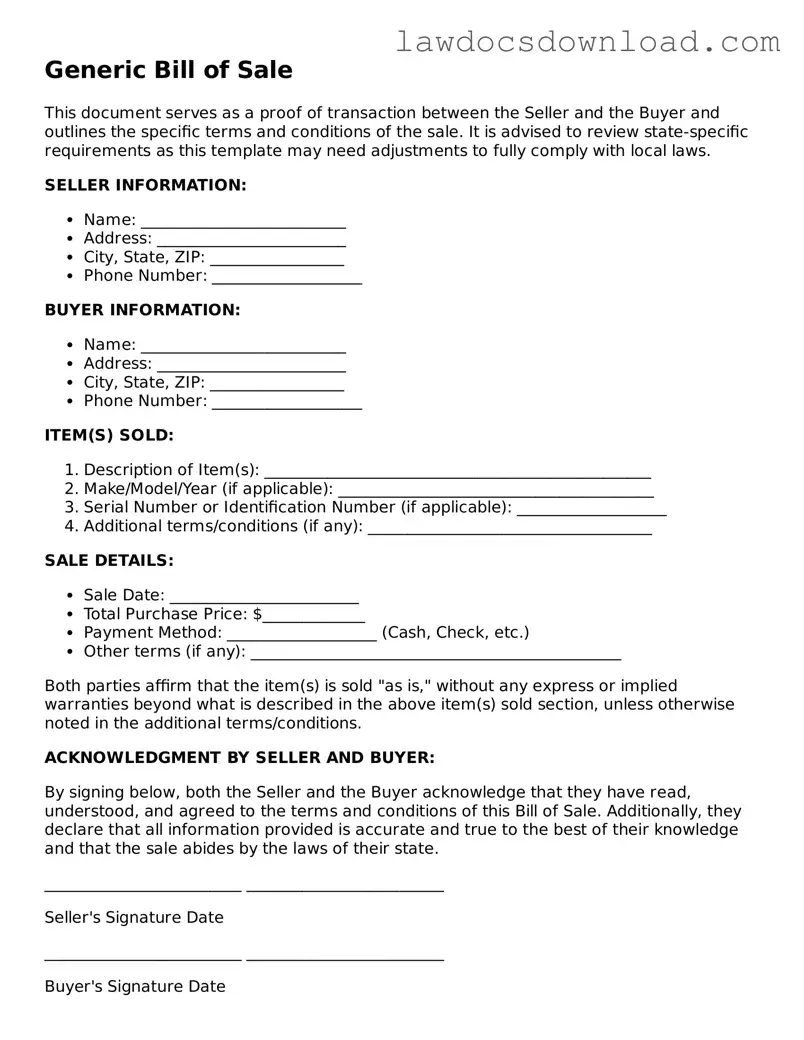When it comes to filling out a Bill of Sale form, it's easy to overlook the small details, thinking they won't make a big difference. However, those little mistakes can lead to big headaches later. One common mistake is not including a detailed description of the item being sold. It’s not enough to just list a car, for example. You’ll want to include the make, model, year, color, VIN (Vehicle Identification Number), and any other identifying information. This specificity ensures both the buyer and seller are clear on what’s changing hands.
Another error is forgetting to check or include the odometer reading for vehicles. This is a crucial piece of information that speaks to the vehicle's condition and history. Without it, the buyer might not be fully aware of what they're purchasing, which can lead to disputes or dissatisfaction.
Many people also neglect to state the item's condition clearly. Whether you're selling a laptop, a car, or a piece of furniture, outlining its current state – including any damages or issues – is essential. This honesty reduces the likelihood of problems after the sale and promotes trust between the buyer and seller.
Omitting the sale date is a surprisingly frequent oversight. The date of the transaction is important for record-keeping and sometimes for legal reasons. Without it, proving when the sale occurred can become unnecessarily complicated.
Not clearly stating the payment details is another common slip-up. It's important to specify if the payment is made in cash, by check, through a bank transfer, or another method. Also, clarifying whether the payment is to be made in installments or all at once can prevent future disputes.
Failing to include both the buyer's and seller's information is a significant error. Full names, addresses, and contact information should be accurately provided. This ensures both parties can be contacted later if there are any questions or issues regarding the transaction.
Avoiding the use of clear, understandable language is a pitfall. Sometimes, people use technical jargon or overly complex language in an attempt to make the document appear more official. However, this can lead to misunderstandings. Keeping the language straightforward ensures everyone is on the same page.
Sometimes, both the buyer and the seller do not sign the document, thinking that one signature is enough. However, having both signatures not only makes the document legally binding but also confirms that both parties agree to the terms of the sale.
Forgetting to include any terms and conditions related to the sale can cause confusion down the line. If there are specific conditions under which the sale is being made, such as 'as is' or subject to an inspection, these should be spelled out in the document.
Last but not least, not retaining a copy of the signed document for personal records is a mistake too many make. Both the buyer and the seller should keep a copy of the Bill of Sale. This serves as proof of the transaction and can be invaluable if any legal issues arise later on.
